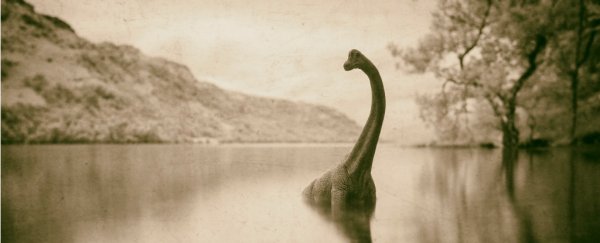Some claim it's a prehistoric relic. Others believe it's a giant sturgeon. Many think it's just a figment of our imagination.
The legend of the Loch Ness monster has been around since the Dark Ages, but despite a few disputed photographs and sonar readings, evidence for the mythical creature has remained purely anecdotal.
For over a thousand years, humans have wanted to solve this mystery. Now, the answer may be just a few months away.
An international team of scientists from the UK, Denmark, USA, Australia and France are planning to submerge themselves in the murky waters of Scotland's most mysterious freshwater loch.
Using environmental DNA (eDNA) sampling, the scientists hope to establish a thorough list of every living thing in Loch Ness. The results from the eDNA sampling will then be compared to other lochs in the Scottish Highlands.
The cutting-edge technology works because, well, life is messy.
"Whenever a creature moves through its environment, it leaves behind tiny fragments of DNA from skin, scales, feathers, fur, faeces and urine," lead author of the study, Neil Gemmell, told the New Zealand Herald.
"This DNA can be captured, sequenced and then used to identify that creature by comparing the sequence obtained to large databases of known genetic sequences from 100,000s of different organisms – if an exact match can't be found we can generally figure out where on the tree of life that sequence fits."
The Loch Ness monster, fondly referred to as Nessie, is commonly believed to be a long-necked creature with one or two humps, resembling the plesiosaurs of prehistoric times.
If such a monster really does exist, theoretically, it should have left behind some biological remnants of its presence in the water.
Gemmell, a geneticist and professor at the University of Otago, says he is doubtful that his team will find any evidence of DNA sequences similar to a large marine reptile.
Nevertheless, like any good scientist, he remains open-minded.
"Large fish like catfish and sturgeons, have been suggested as possible explanations for the monster myth, and we can very much test that idea and others," Gemmell said.
Still, the project is so much more than just looking for a fabled Scottish monster. The study is set to crack open the full extent of the Loch Ness ecosystem.
"While the prospect of looking for evidence of the Loch Ness monster is the hook to this project, there is an extraordinary amount of new knowledge that we will gain from the work about organisms that inhabit Loch Ness - the UK's largest freshwater body," Gemmell said.
The hope is that the team will be able to uncover new species within the waters, especially in regards to new bacteria.
The study may also shed some light on the extent to which invasive species, like the Pacific pink salmon, have disrupted the loch's ecosystem.
Above and beyond the much-awaited results, the international team hopes to use the study as an opportunity for science communication.
"We have the opportunity through this project to demonstrate the scientific process: how hypotheses are established and tested, the need to replicate, use controls and account for observer bias using double-blind methodologies. These are all important parts of this story," Gemmell said.
If Nessie really is out there, she won't be able to hide from us for much longer.
